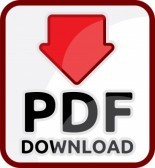B. F. Aparin1,2, Ye. Yu. Sukhacheva2,1
1Saint Petersburg State University, Universitetskaya nab. 7-9 St. Petersburg, 199034 Russia
2Dokuchaev Central Soil Science Museum, Birzhevoi pr. 6, Petersburg, 199034 Russia
Based on the example of St-Petersburg a genetic diversity of natural, human-transformed and anthropogenic soils has been thoroughly studied at the urbanized territory of this megalopolis. Under consideration are changes in components of the soil cover caused by the human activities along with the regularities in the soil cover formation that has being developed for several centuries from the beginning of the 18 th century. It is also shown how changed the initial profile of natural soils accompanying the urbanization process with special emphasis on peculiar features of the soil formation at the urban territory. Among a great variety of surface bodies at this territory the soils were found out, the definition of which is given in Russian soil classification system and the WRB. The principles for classifying the urban soils are considered. The distinct morphological features of an introduced horizon are determined to give the comprehensive characteristics of human-transformed soils. Under discussion is the concept of “introduced horizon” composing of the human-modified material from the humus or organogenic horizons of natural soils and having the lower sharply expressed boundary with the parent rock. In Russian soil classification system it would be advisable to use a new order of “introduced soils” within the trunk of synlithogenic soils along with stratozems, volcanic, weakly developed and alluvial soils. In the WRB system it would be also possible to identify a new reference group of soils including the soils with the introduced horizon and underlying by any mineral substratum of natural or anthropogenic origin.
Keywords: urban soils, classification, soils, principles, introduced horizon
REFERENCES
1. Aparin B.F., Sukhacheva E.Yu. Pochvennyi pokrov Sankt-Peterburga: “iz t'my lesov i topi blat” k sovremennomu megapolisu, Biosfera, 2013, Vol. 5, No 3, pp. 327–352.
2. Aparin B.F., Sukhacheva E.Yu. Pochvennaya karta – osnova integral'noi otsenki ekologicheskogo prostranstva megapolisa, Proceedings of the Conference Title “Nere-shennye problemy klimatologii i ekologii megapolisov”, St. Peterburg, 2013, pp. 5–10.
3. Aparin B.F., Sukhacheva E.Yu. Principles of soil mapping of a megalopolis with St. Petersburg as an example, Eurasian Soil Science, 2014, Vol. 47(7), pp. 650–661, DOI: 10.1134/S1064229314070035.
4. Bakina L.G., Orlova N.E., Kapel'kina L.P., Bardina T.V. Gumusovoe sostoyanie gorodskikh pochv Sankt-Peterburga, Gumus i pochvoobrazova-nie, St.Peterburg, 1999, pp. 26–30.
5. Gerasimova M.I., Stroganova M.N., Mozharova N.V., Prokof'eva T.V. Antropogennye pochvy: genezis, geografiya, rekul'tivatsiya. Smolensk, 2003, 268 p.
6. Klassifikatsiya i diagnostika pochv SSSR, Moscow, Kolos, 1977. 224s.
7. Klassifikatsiya i diagnostika pochv Rossii. Smolensk: Oikumena, 2004. 235 s.
8. Lebedeva I.I., Gerasimova M.I. Possibilities of Including the Taxonomy of Soils and Parent Materials of Moscow City into the Classification System of the Soils of Russia, Eurasian Soil Science, 2011. Vol. 44(5), pp. 572-581. DOI: 10.1134/S1064229311050103.
9. Matinyan N.N., Bakhmatova K.A., Sheshukova A.A. Pochvy Sheremet'evskogo sada (nab. Fontanki 34), Vestnik SPbGU, 2008, Ser. 3.
10. Nadporozhskaya M.A., Slepyan E.I., Kovsh N.V. O pochvakh istoricheskogo tsentra Sankt-Peterburga, Vestnik SPbGU, 2000, Ser. 3, Vol. 1(No3), pp. 116–126.
11. Pochva, gorod, ekologiya / Pod red. Dobrovol'skogo G.V., Moscow, 1997, 320 p.
12. Prokof'eva T.V., Martynenko I.A., Ivannikov F.A. Classification of Moscow Soils and Parent Materials and Its Possible Inclusion in the Classification System of Russian Soils, Eurasian Soil Science, 2011. Vol. 44 (5), pp. 561-571, DOI: 10.1134/S1064229311050127.
13. Prokof'eva T.V., Gerasimova M.I., Bezuglova O.S., Bakhmatova K.A., Gol'eva A.A., Gorbov S.N., Zharikova E.A., Matinyan N.N., Nakvasina E.N., Sivtseva N.E. 'nclusion of Soils and Soil-Like Bodies of Urban Territories into the Russian Soil Classification System, Eurasian Soil Science, 2014, Vol. 47(10), 959-967, DOI: 10.1134/S1064229314100093.
14. Rusakov A.V., Ivanova K.A. Morfologicheskoe stroenie i svoistva pochv istoricheskogo tsentra Sankt-Peterburga (ploshchad' pered Kazanskim soborom), Materialy po izucheniyu russkikh pochv, St. Peterburg, 2002, Vol. 3(30), pp. 37–40.
15. Stroganova M.N., Agarkova M.G. Gorodskie pochvy: opyt izucheniya I sistematika (na primere pochv yugo-zapadnoi chasti g. Moskvy), Pochvovedenie, 1992, No 7, pp. 16–24.
16. Shestakov I.E., Eremchenko O.Z., Fil'kin T.G. Approaches toward Soil Mapping of Urban Territories with the City of Perm as an Example, Eurasian Soil Science, 2013. Vol. 46(12), pp. 1130-1138. DOI: 10.1134/S1064229314010104.
17. Aparin B., Sukhacheva E. Introduced Soils of Urban Areas and their Placement in the World Reference Base for Soil Resources, Proceedings of the Conference of 20th World Congress of Soil Science, Jeju, Korea, 20wcss.org
18. Burghardt W. Soil in urban and industrial environments. Zeitschrift Pflanzenernahr., Dung., Bodenkunde. 1994. V.157. P. 205–214.
19. First International Conference on soils of urban, industrial, traffic and mining areas. University of Essen, Germany, 2000, Vol. 1, 366 p.
20. Lehmann A., Stahr K. Nature and Significance of Anthropogenic Urban Soils, J. Soils Sediments, 2007, Vol. 7(4), pp. 247–260.
21. Naeth M.A., Archibald H.A., Nemirsky,C.L., Leskiw L.A. Brierley J.A. Bock M.D., Vanden Bygaart A.J. and Chanasyk D.S. Proposed classification for human modified soils in Canada: Anthroposolic order, Can. J. Soil Sci., 2012, Vol. 92, pp. 7–18.
22. Rossiter D.G. Classification of Urban and Industrial Soils in the World Reference Base for Soil Resources, J. Soils Sediments, 2007. Vol. 7(2), pp. 96–100.
23. Sukhacheva E., Aparin B. Principles of soil mapping of urban areas, Abstract book of 9th International Soil Science Congress on “The soul of soil and Civilization”, Side, Antalya, Turkey, 2014, pp. 539.
24. IUSS Working Group WRB. World Reference Base for Soil Resources 2014. International soil classification system for naming soils and creating legends for soil maps. World Soil Resources Reports No. 106. FAO, Rome. 2014. 181 р.
